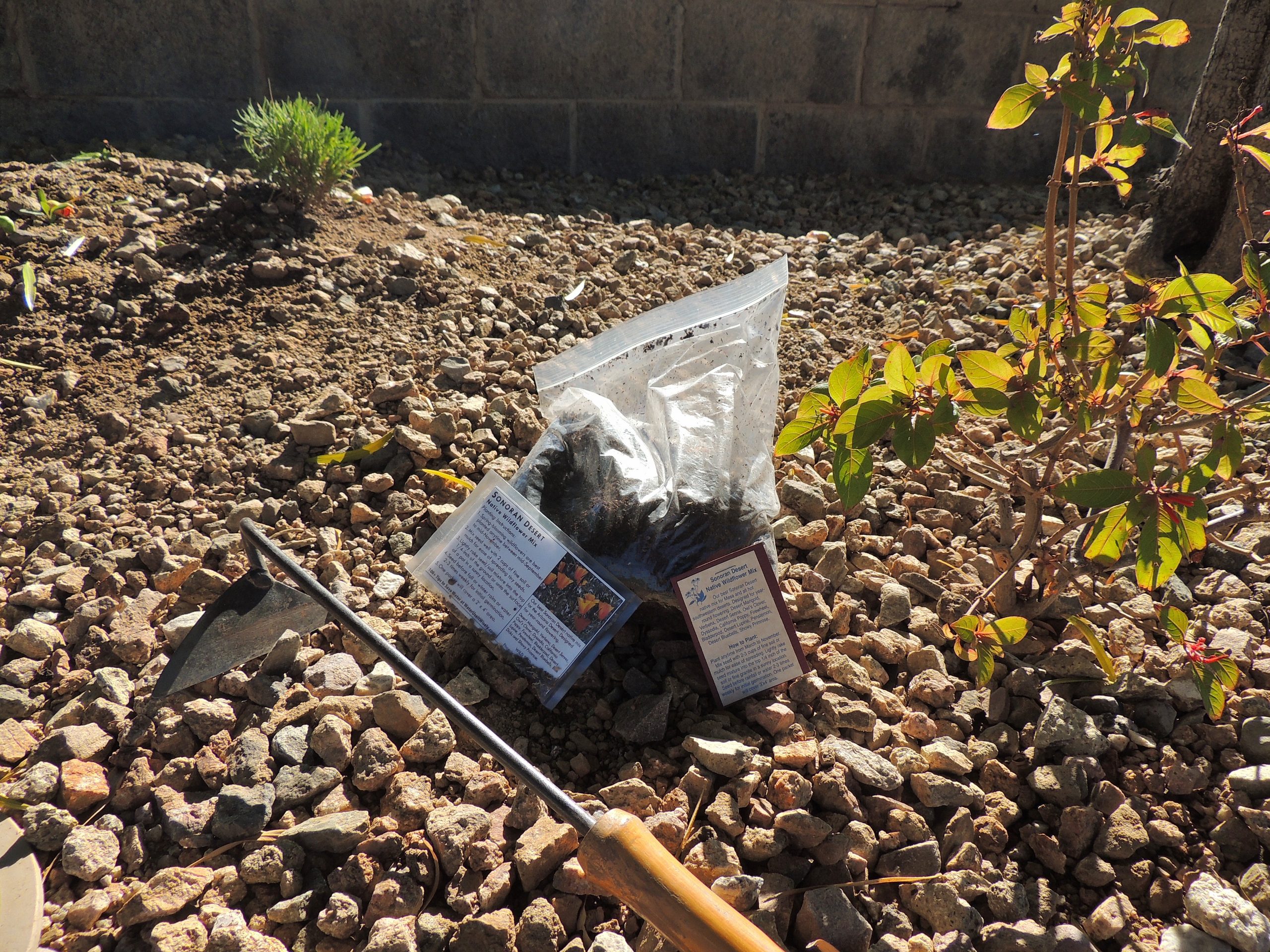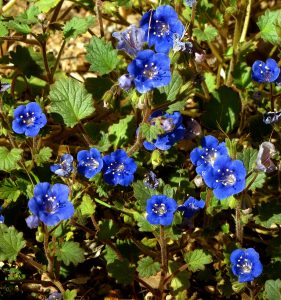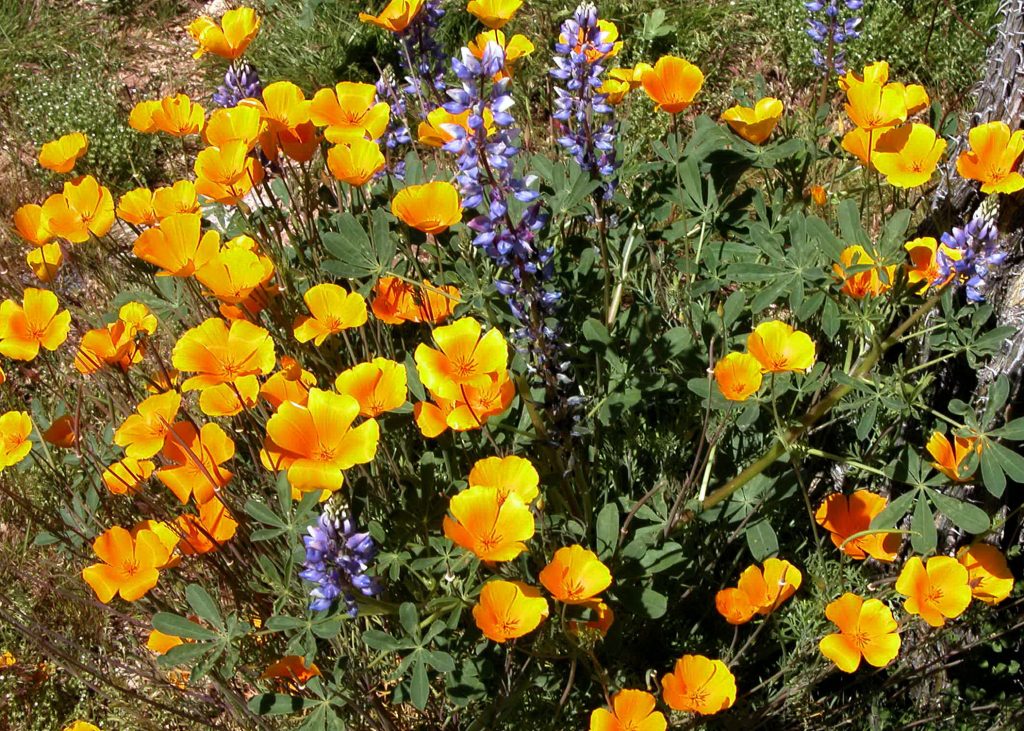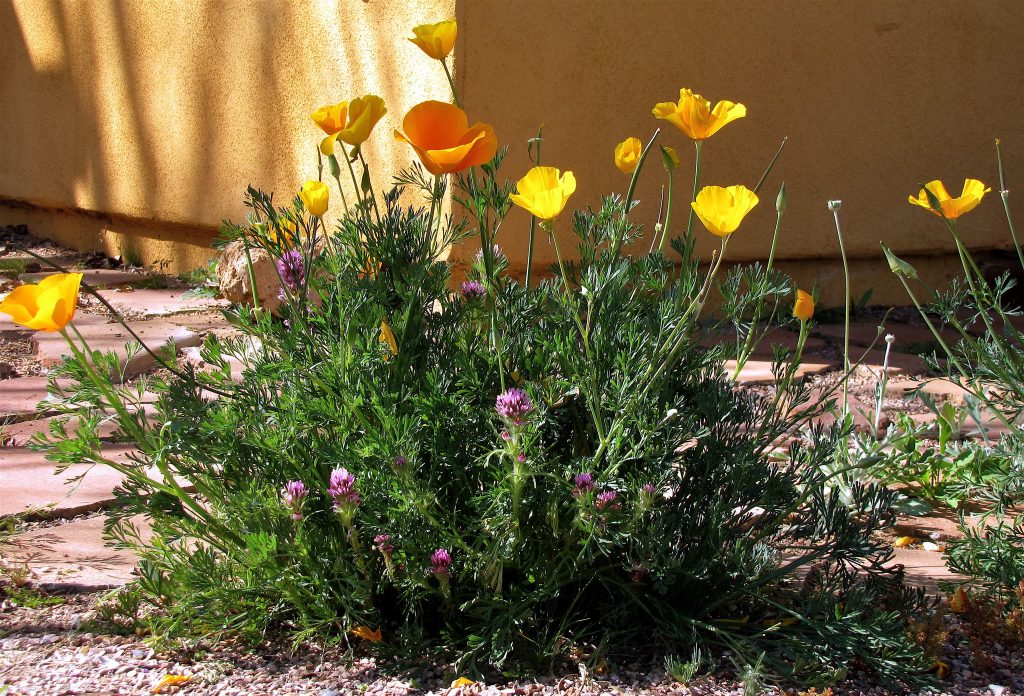It might seem strange to be talking about wildflowers in the fall. After all, most are spring bloomers, putting on their colorful, showy displays from February through April in the Sonoran Desert. What you may not know is that you need to plant your wildflower seeds NOW for spring bloom!

When you look at how our native desert plants survive our harsh climate and dry conditions, you learn about all kinds of interesting adaptations. Cacti and other succulent plants (like agaves) store water, gray leaves of sages and brittlebush help reflect the hot sun, and palo verde trees have green bark so that when water is scarce, they can drop their leaves and still photosynthesize or make food.
Wildflowers have a different strategy. They are known as drought evaders, meaning that they only grow when water is available. These colorful plants germinate in the fall and winter when there is adequate seasonal rains starting about October. They stay small and grow slowly through December and January then burst into bloom to announce the arrival of spring.
WHAT TO LOOK FOR
Avoid wildflower or ‘meadow’ mixes from other parts of the country or world. For example, African Daisies are… well, from Africa. These seeds can be invasive and be detrimental to our native plants or animals. Look for quality, locally grown or collected seed that includes beauties such as Mexican Gold Poppies, Arizona Lupines and Desert Bluebells. You’ll find quality, local seed at nurseries, seasonal plant sales, or these outlets: Native Seeds/SEARCH; The Native Seed Company.
WHEN & HOW TO PLANT

Spring-blooming wildflowers are best planted anytime between mid-September through mid-November. It is best to mix about a teaspoon of seed with two or more cups of fine soil or organic mulch. This will help to distribute the tiny seeds more evenly. Scatter seed mix and lightly rake into the soil surface or just scratch into granite areas or around boulders.
WATERING & CARE
If we get adequate winter rains, there is no need to water. Otherwise, water the area 2-3 times weekly to germinate, then only once every 3-4 weeks. Since many of the wildflowers are annuals, they will set seeds after they have put on their show. You can collect the seeds yourself to sow next fall or just allow them to fall to the ground. The seeds that don’t get eaten by birds or insects will set the stage for the following year if there’s adequate rain. Dried plants can be pulled or cut to the ground.
VARIETIES AVAILABLE
Visit our online guide, Landscape Plants for the Arizona Desert, to learn about the variety of beautiful wildflowers and other annuals available!
Did you know that up to 70 percent of water use is outdoors? That’s why we love desert plants and feature them each month. It’s a great time to plant, and you can learn more about wildflowers and other plants on our Arizona Low-Water-Use Plants page. Visit our page on Choosing and Planting Low Water-Use Plants for tips on plant selection and how to plant properly.
Also, be sure to read through all of our featured Plant of the Month blogs!

Photos by Donna DiFrancesco. Top photo includes California Poppy, Mexican Poppy, and Owl’s Clover.
Donna DiFrancesco is a Conservation Coordinator with the City of Mesa, AZ, one of 19 Water – Use It Wisely partners to offer water-saving advice and programs.


